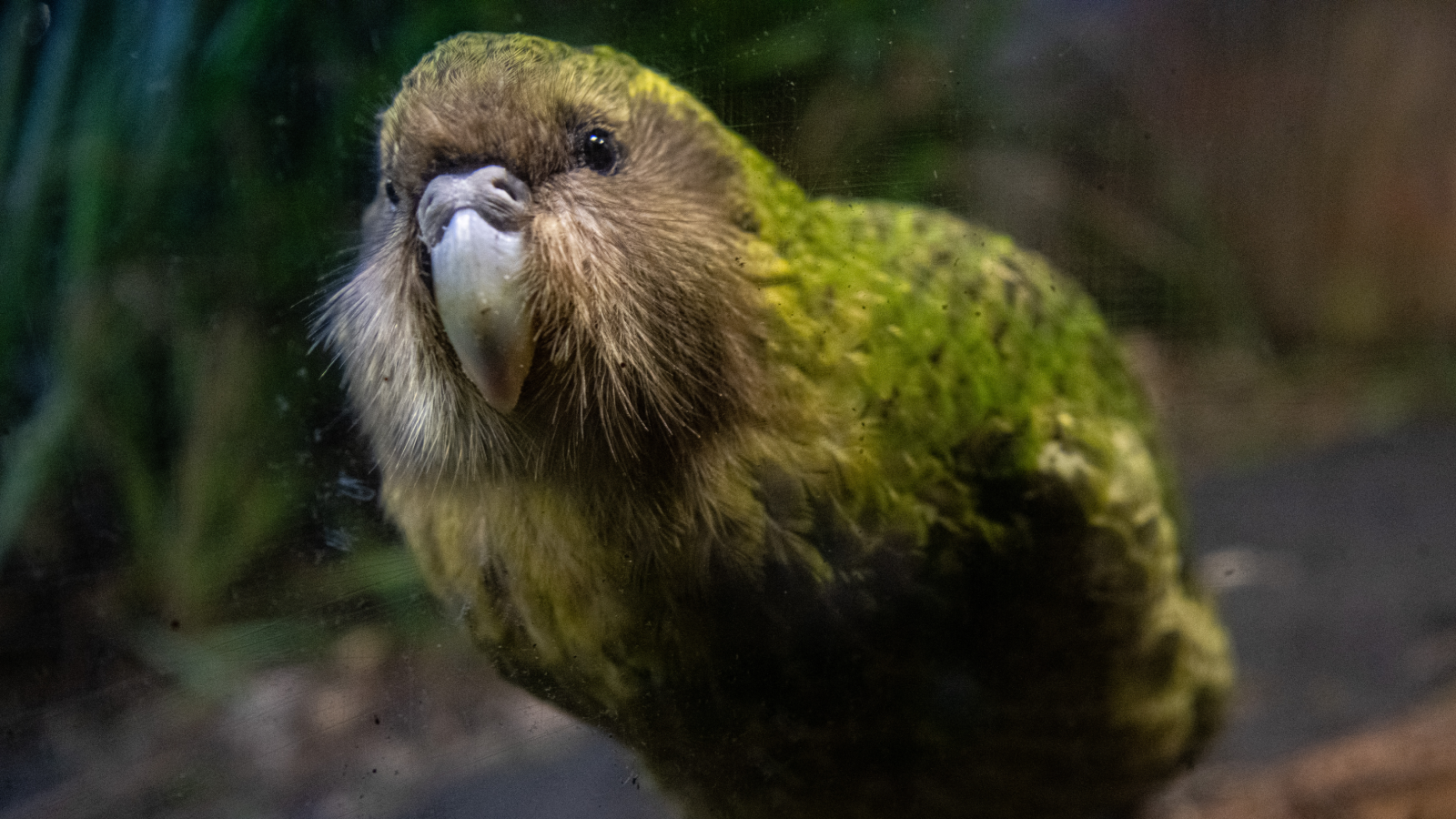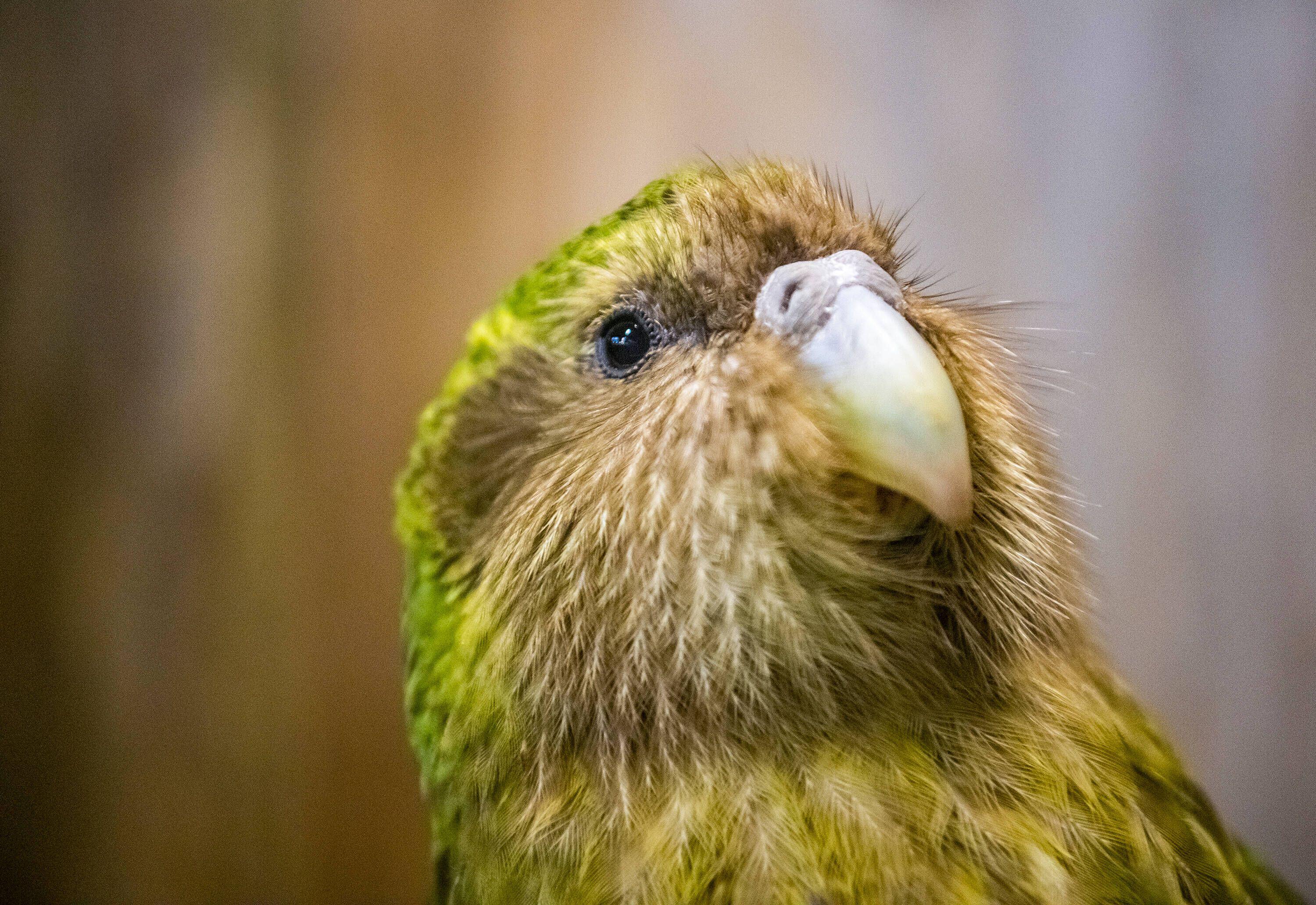Kākāpō: The chonky parrot that can live almost 100 years
This flightless nocturnal parrot is only found in New Zealand.

Name: Kākāpō (Strigops habroptila), also known as the owl parrot
Where it lives: Off the coast of New Zealand on the Codfish, Maud and Little Barrier Islands
What it eats: Kākāpō are vegetarians. Their diet varies with the seasons and includes tubers, fruits, seeds, leaf buds, young plant shoots, fungi and moss.
The first thing that you'll notice about kākāpō — a type of large, flightless parrot found only in New Zealand — is how rotund they are.
They have endearingly round heads and bodies, owl-like faces and sturdy legs, and they are the biggest of all modern parrots; males measure up to 25 inches (64 centimeters) long and can weigh nearly 9 pounds (4 kilograms). Kākāpō are also one of the longest-lived birds in the world, estimated to reach 90 years.
The name "kākāpō" means "night parrot" in the Māori language, a reference to the birds' nocturnal habits. Though kākāpō cannot fly, they can walk for long distances and are agile climbers, clambering and leaping from trees using their shortened wings for balance.
When they sense danger, kākāpō freeze in place, and their mottled emerald-green plumage renders the birds nearly invisible against the leafy forest backdrop. The feathers of the male kākāpō have a distinctive odor that scientists have described as "sweet and vegetative," and this powerful scent may play a role in males' mating success.
Mating in kākāpō is also unique, as they are the only parrot species to exhibit a behavior called lekking. Males create a stage of sorts, shaping a shallow bowl-shaped depression in the ground. They then crouch in their bowl and call for females using two different sounds: a series of low-frequency "booms" that sound like a tuba, punctuated by a high-pitched "ching." Males may boom and ching for eight hours at a stretch, continuing nightly for two or three months.

However, in the absence of female attention some males have been known to direct their affections elsewhere. In 1990, author Douglas Adams wrote about an unusual encounter with an amorous kākāpō, describing it in his book "Last Chance to See" (Penguin Random House, 1992). The incident took place while Adams was recording a segment for a BBC radio programme about endangered species.
"When one of the rangers who was working in an area where kākāpōs were booming happened to leave his hat on the ground," Adams wrote, "he came back later to find a kākāpō attempting to ravish it."
Get the world’s most fascinating discoveries delivered straight to your inbox.
Scientists who work with kākāpōs even built a rubber "ejaculation helmet" to accommodate a kākāpō named Sirocco, who was notorious for trying to mate with people's heads. The helmet had a dimpled surface, suitable for collecting sperm for use in artificial insemination.
The birds breed once every two to four years, when local rimu trees produce an abundant crop of berries. These fruits are rich in calcium and vitamin D, essential nutrients for egg laying and for nourishing growing chicks.
Kākāpō thrived for tens of millions of years across New Zealand, where they had no natural predators. But with the arrival of Polynesian people around 700 years ago, the birds' numbers began to drop. Their decline accelerated when Europeans colonized New Zealand in the early 1800s. Deforestation and the introduction of mammalian predators, such as rats, cats and stoats, brought kākāpō to the brink of extinction, and by the 1900s, they had all but vanished.
But in the 1970s, conservationists discovered a breeding population of about 200 birds. For decades they worked to protect kākāpō and secure their future, moving them to the three islands where they live today (and where all invasive carnivores have since been eradicated). Currently there are about 242 kākāpō in the wild, and they are recognized as critically endangered with a high risk of extinction.

Mindy Weisberger is a science journalist and author of "Rise of the Zombie Bugs: The Surprising Science of Parasitic Mind-Control" (Hopkins Press). She formerly edited for Scholastic and was a channel editor and senior writer for Live Science. She has reported on general science, covering climate change, paleontology, biology and space. Mindy studied film at Columbia University; prior to LS, she produced, wrote and directed media for the American Museum of Natural History in NYC. Her videos about dinosaurs, astrophysics, biodiversity and evolution appear in museums and science centers worldwide, earning awards such as the CINE Golden Eagle and the Communicator Award of Excellence. Her writing has also appeared in Scientific American, The Washington Post, How It Works Magazine and CNN.
You must confirm your public display name before commenting
Please logout and then login again, you will then be prompted to enter your display name.
 Live Science Plus
Live Science Plus






